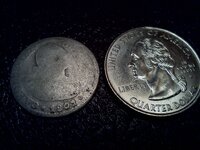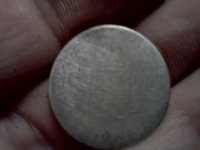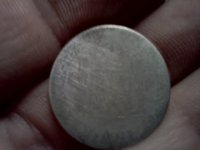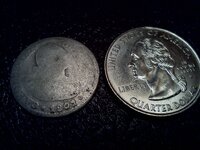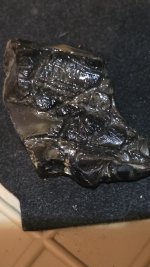Orbitz
Full Member
- Feb 25, 2012
- 142
- 299
- Detector(s) used
-
Bounty Hunter 505
Bounty Hunter VLF
Bounty Hunter tracker IV
- Primary Interest:
- All Treasure Hunting
Is it unusual ? 1801 1 Reale only 4"
Is it unusual to find a 1801 1 reale coin only 4" down?
I found this on Thur. after a heavy night's rain, I hit a
iron target and I dug it, usually I don't dig those, anyway
after I pulled out a small iron piece of pipe, or thats what
it looked like, I went over the hole again and got a very
strong coin tone, I started movoing the dirt around and
that's when I seen the silver, half way out of the dirt, it was
Beautiful!
I went back 2 days in a row and searched around the same hole
and nothing, could that coin have been in the ground for over 200
years and not be any signs of corrosion? I am thinking maybe
someone already had it and recently dropped it, as it was only
4" down, what are your thoughts?
Thanks for reading.

Is it unusual to find a 1801 1 reale coin only 4" down?
I found this on Thur. after a heavy night's rain, I hit a
iron target and I dug it, usually I don't dig those, anyway
after I pulled out a small iron piece of pipe, or thats what
it looked like, I went over the hole again and got a very
strong coin tone, I started movoing the dirt around and
that's when I seen the silver, half way out of the dirt, it was
Beautiful!
I went back 2 days in a row and searched around the same hole
and nothing, could that coin have been in the ground for over 200
years and not be any signs of corrosion? I am thinking maybe
someone already had it and recently dropped it, as it was only
4" down, what are your thoughts?
Thanks for reading.



